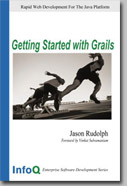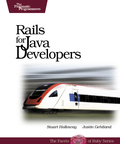David Sachdev on Web Framework Proliferation
David Sachdev left the following comment in my post about the Java Web Framework Smackdown at TSSJS in Vegas:
The number of web frameworks out there is just astonishing, and in alot of ways I think that there is need for some consolidation in some way, shape or form. If you work in the Java world there is a sense of consolidation in the ORM space these days with JPA (the Java Persistence API). Sure if you are working strictly with JPA it is a bit more limiting then working directly with Hibernate, iBatis, or TopLink - but you no longer worry that you have made a critical misstep in your architecture by tying yourself do a particular ORM implementation. Similarly Spring gives you that similar "loosely coupled" feel that if Google's Guice because appealing to you, you don't feel like you've wasted all your framework foo on Spring. But web frameworks....that's another story.
I think if you had asked me a few months ago, I would have told you that the industry is promoting JSF (Java Server Faces). Everything from support in the IDEs to the availability of AJAX frameworks...and of course a flexible life cycle that allows for alternate implementations and various code to plug or be weaved in to the life cycle. And that while JSF on its own left quite a bit to be desired, the JBoss Seam project really has filled in the gaps in JSF, and in fact brought Java web development closer in agility to the Rails and Grails of the world that tout quickly built and deployed web applications.
But the thing that you continue to hear is that programming in JSF is painful. And you hear that EVERYONE used to use Struts. And that it is time to move past Struts. And given that, you have to consider Webwork and the merger of Struts2 into that framework - and their claims of rapid development. But you also have to consider Spring WebFlow and how that may help solve your JSF ills given that everyone is building off of the Spring Framework and they have been so good about keeping the framework updated and integrating the best of what is out there while innovating themselves. And then if you are looking at Spring WebFlow, you kinda have to go "Wait, but what about Spring MVC?"
Given its age, you might quickly dismiss Spring MVC until you realize that Grails is build upon it. Grails, that web platform that every java developer is either working with, or intends to work with soon. (Come on, you all have made the Ruby/Rails, Groovy/Grails, JRuby decision in favor of G2, right? I mean all the flexibility of what is out there in the Java world on top of the JVM, with a language that doesn't suck the life outta you....) And then you have to wonder that if you build upon Spring MVC as well as using Groovy and Grails where appropriate, might you be able to make that killer app in half the time.
But wait, you didn't think your choices were nearly that simple did you? There is this wonderful software company out in Mountain View that we need to pay attention too. In Google We Trust, right? And even if you don't worship at the Temple of the G (TOTG) like Sprout, you don't want to ignore them. And, if you've looked at the Google Web Toolkit (GWT) and weren't at least slightly impressed, I would be surprised. And if you are looking at the GWT, you can't totally ignore Yahoo's YUI - maybe with some of the what Prototype, Scriptaculous, or DoJo offer you. And then someone will come over and point out Echo2 to you, and well you have to admit, their demo looks nice. And well, there is Adobe Flex, and OpenLaszlo - I mean after all isn't Web 2.0 all about Rich Internet Applications. And surely you've heard that the performance of Swing is so much better these days and the "power of the modern Java applet"
So at the end of it all, you've got yourself alot of R&D to do, and just as you thing you've got a good grasp for the offerings out there, new and improved versions are out. And don't worry, someone else is also busy working on a new and greater web framework that you have to consider.
Wow - that's quite a mouthful David. Well written!
P.S. The Early Bird Deadline for TSSJS is today.







 However, that's not always true either.
However, that's not always true either.